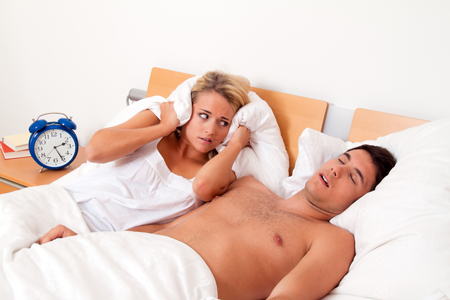
We all know that getting a good night’s sleep can improve our overall health in many ways. That is why doctors constantly try to improve different anti snoring devices, better known as CPAP machines. In recent years, this is one of the best treatments for the people who suffer from obstructive sleep apnea. CPAP is the first choice when it comes to treating mild and moderate sleep apnea and is the only effective therapy for treating severe sleep apnea with the help of various anti snoring devices.
All anti snoring devices, from humidifiers, nose strips, nasal pillows and CPAP mask to CPAP mask parts, are designed to provide constant stream of air to the lungs. The air produces pressure that prevents the inner tissue in the throat from collapsing and blocking the airway. In addition to well-known and most commonly used CPAP mask and various attachments and CPAP mask parts, today, sleep apnea patients can sleep better with new innovative treatments – the Provent therapy and the Oropharyngeal exercises.
Provent Therapy – The Provent therapy is a breakthrough treatment in obstructive sleep apnea and other snoring-related sleeping problems. Provent therapy are small, disposable, portable and easy-to-use nasal devices which increase the pressure in the airway preventing the throat tissue from collapsing when sleeping. Many patients feel uncomfortable at first, but get used to these anti snoring devices in maximum in one week. They are worn only during sleep. For best results, when applying these anti snoring devices, the face must be clean and dry.
Oropharyngeal exercises – Another Cpap therapy, aside from CPAP mask, which is becoming more popular is the Oropharyngeal exercise. This Cpap therapy significantly reduces the symptoms of sleep apnea and snoring, improving the quality of sleep and overall lifestyle. A study conducted in 2009, observed a group of 31 sleep apnea patients for 3 months who performed he oropharyngeal exercises 30 minutes per day. The results were impressive as the reduction in the AHI (apnea – hypopnea index) was remarkable. Here are the exercises done by the patients during the study:
Soft Palate
- Pronounce an oral vowel periodically (isotonic exercise) and constantly (isometric exercise). Repeat this exercise every day for 3 minutes.
Tongue
- Brush the sides and the top of the tongue five times with each movement, three times a day.
- Place the tip of the tongue against the front of the palate and gently slide the tongue backward. Do this exercise every day for 3 minutes.
- The next tongue exercise is forcing the tongue upward sucking against the palate and pressing the tongue against the palate. Do this exercise 3 minutes per day. Force the back of the tongue against the floor of the mouth and at the same time touch the inferior incisive teeth with the tip of the tongue for 3 minutes every day.
Facial
- Orbicularis oris muscle pressure with closed mouth.
- Suction movements
- Breathing and speech – breathe through the nose and out through the mouth while pronouncing the vowels.
- Swallow and chew



